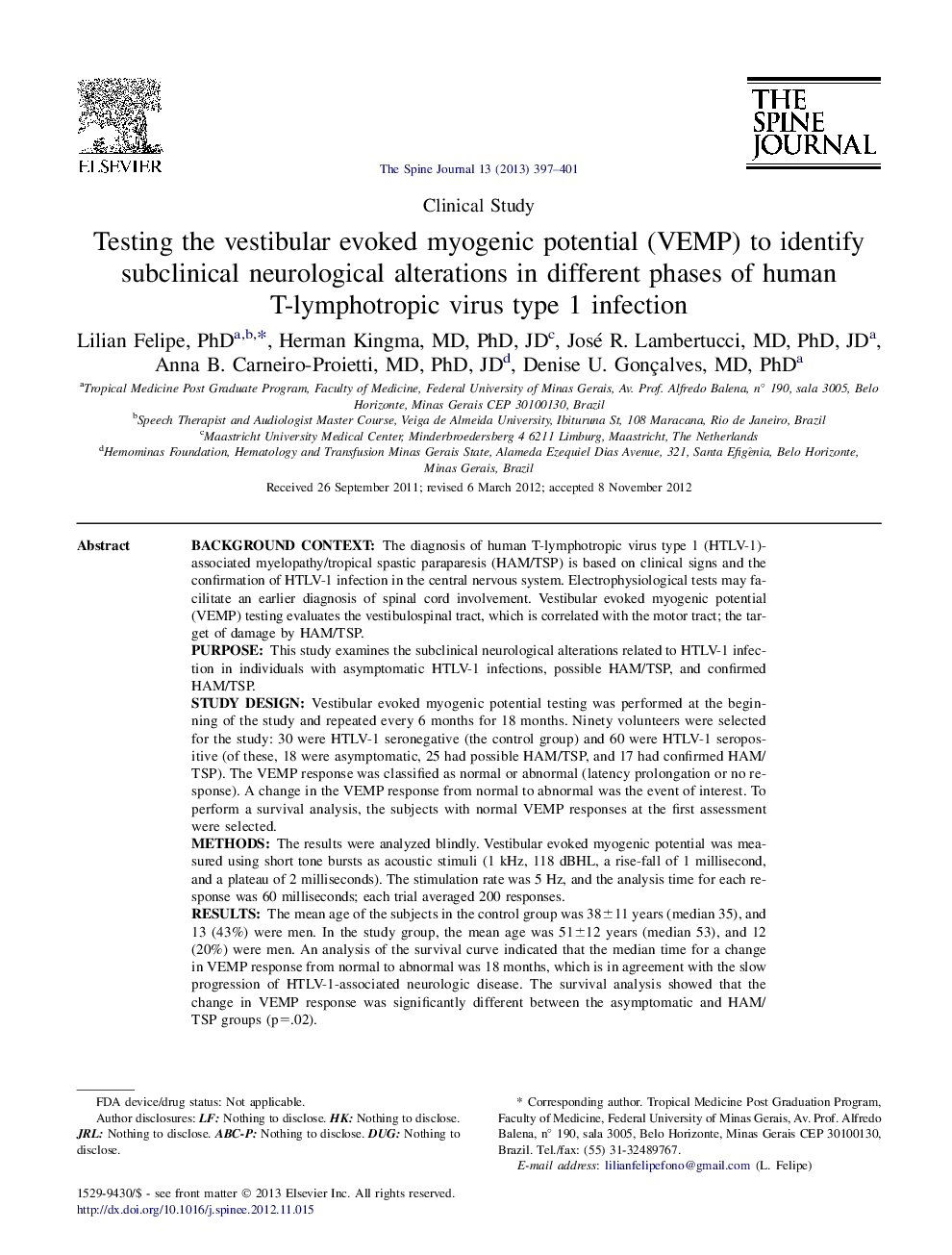| کد مقاله | کد نشریه | سال انتشار | مقاله انگلیسی | نسخه تمام متن |
|---|---|---|---|---|
| 6212665 | 1268587 | 2013 | 5 صفحه PDF | دانلود رایگان |

Background contextThe diagnosis of human T-lymphotropic virus type 1 (HTLV-1)-associated myelopathy/tropical spastic paraparesis (HAM/TSP) is based on clinical signs and the confirmation of HTLV-1 infection in the central nervous system. Electrophysiological tests may facilitate an earlier diagnosis of spinal cord involvement. Vestibular evoked myogenic potential (VEMP) testing evaluates the vestibulospinal tract, which is correlated with the motor tract; the target of damage by HAM/TSP.PurposeThis study examines the subclinical neurological alterations related to HTLV-1 infection in individuals with asymptomatic HTLV-1 infections, possible HAM/TSP, and confirmed HAM/TSP.Study designVestibular evoked myogenic potential testing was performed at the beginning of the study and repeated every 6 months for 18 months. Ninety volunteers were selected for the study: 30 were HTLV-1 seronegative (the control group) and 60 were HTLV-1 seropositive (of these, 18 were asymptomatic, 25 had possible HAM/TSP, and 17 had confirmed HAM/TSP). The VEMP response was classified as normal or abnormal (latency prolongation or no response). A change in the VEMP response from normal to abnormal was the event of interest. To perform a survival analysis, the subjects with normal VEMP responses at the first assessment were selected.MethodsThe results were analyzed blindly. Vestibular evoked myogenic potential was measured using short tone bursts as acoustic stimuli (1 kHz, 118 dBHL, a rise-fall of 1 millisecond, and a plateau of 2 milliseconds). The stimulation rate was 5 Hz, and the analysis time for each response was 60 milliseconds; each trial averaged 200 responses.ResultsThe mean age of the subjects in the control group was 38±11 years (median 35), and 13 (43%) were men. In the study group, the mean age was 51±12 years (median 53), and 12 (20%) were men. An analysis of the survival curve indicated that the median time for a change in VEMP response from normal to abnormal was 18 months, which is in agreement with the slow progression of HTLV-1-associated neurologic disease. The survival analysis showed that the change in VEMP response was significantly different between the asymptomatic and HAM/TSP groups (p=.02).ConclusionsVestibular evoked myogenic potential testing was useful for monitoring the development of HAM/TSP in HTLV-1-infected individuals.
Journal: The Spine Journal - Volume 13, Issue 4, April 2013, Pages 397-401